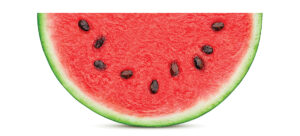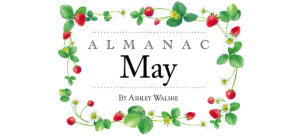
Return of the Victory Garden
Idle time can lead to busy hands
By Jan Leitschuh
Got time on your hands? Matt and Betty Kuhn did.
They tired of a patch of overgrown blackberries at their Whispering Pines home. They were planning to “do something with it” — someday.
“Then, COVID came along,” recalls Matt. “Betty and I were cocooning at home, and the garden project just popped right up.”
Out came the blackberry tangle. In went, not shrubbery, but garden produce — six varieties of tomatoes, green beans, okra, several kinds of peppers, onions, herbs and garlic.
“Our little COVID-19 Victory Garden,” he says.
In these slower, socially-distanced times, many of us find ourselves sticking closer to home. And suddenly, little produce gardens are popping up where before there were none.
It makes sense for spring 2020. In a flash, we had extra time on our hands. We boned up on simple ways to strengthen our immune systems, from vitamin D to eating a healthy, whole-food diet. The siren call of spring drew us into the sun. We found a renewed enjoyment in going outside, even if it was the backyard. We eyed a sunny spot and began to muse about ripe tomatoes and crisp cukes, pungent basil, watermelon, beets and beans.
At the same time, we were seeing headlines highlighting incredible waste — dumped dairy, produce rotting in the fields, meat-packing plants shutting down, supply chains upended due to the global coronavirus pandemic. Going to a grocery store became an undertaking requiring masks and disinfectants.
We found ourselves ordering seeds and produce plants. Not to replace the grocery store. A little plot of land in the backyard, that’s something we could control in unsettled times. A distraction that could land on a plate.
These and other factors are at play this year, creating what some news reports are calling “the return of the Victory Garden.” National online retailers are reporting seed sellouts and up to a 300 percent increase in sales, with local sellers mirroring that demand.
Food. It’s not just for farmers anymore.
Making light of that which unsettles, one social media meme goes: “We are thinking of planting a garden in case of food shortages. Anybody have any Snickers or Cheetos seeds?”
Despite stores nationally keeping plenty of food on the shelves, runs on certain items may have spooked a few consumers. “I think there are a few people who worry about there being enough in the grocery store — in case the trucks can’t get through or the farmers can’t make do,” says manager Dawn Bowden of Sandhills Feed Supply of Southern Pines. “So they are trying to do a little of their own.”
Backyard produce is nothing new. During World War I, when a severe food crisis emerged in Europe, American citizens were asked to help by growing and preserving some of their own produce. The National War Garden Commission was organized to encourage Americans to contribute to the war effort by planting, fertilizing, harvesting and storing their own fruits and vegetables — that way, more food could be exported to our hungry allies.
No longer confined to rural fields, a kitchen garden habit took root in towns across America.
Victory gardens resurfaced again in World War II. With commercial crops sent to the military overseas, and the 1942 introduction of food rationing, Americans were once more urged to grow their own fruits and vegetables. My parents never lost the habit of those war years, and passed their love and knowledge of kitchen gardening along to me. Naturally, I applaud the recent enthusiasm to stick a tomato or three in the ground.
While there is no government campaign for Americans to utilize idle land to grow produce for themselves, an increased interest in food gardening has emerged again, just as it did in the tough economic times between 2008 and 2009.
Locally, the kitchen garden trend is booming.
“Our veggie plant sales have increased dramatically, and seeds have sold more than ever this year,” says Megan Gulley of Gulley’s Garden Center in Southern Pines. Popular sales include “lots of tomatoes, of course, but also peppers,” she says. “Cucumbers are flying out. Cantaloupe and watermelon are popular, especially for the kids.”
Plant and seed sales at Aberdeen Supply Garden Center have also been “through the roof,” says manager Brian Smith. “We cannot keep everything that everybody wants in stock,” he says. “We’re just selling our stuff so fast.”
The garden story is the same everywhere. “Sales have, I’d say, doubled,” says Bowden. “We’re already at what we’d sell for the year, and its only April.”
The local response doesn’t seem to be some homesteading survivalist urge so much as simply “time on their hands at home,” says Gulley — and pursuing that craving for the taste of fresh produce. Sure, people may have been a little spooked by empty supermarket shelves early on, but taste and time seem to be leading this resurgence.
“We’ve been thinking about this for some time,” says gardener Kuhn, “but never got around to it. You can’t beat the taste of a vine-ripened, homegrown tomato, period. “
That gift of time led to their garden. “We were comfortably and happily ensconced here,” says Kuhn. “COVID came along and gave us the added incentive and time to do it.”
And, with lots of family togetherness, parents and grandparents are looking for projects to share. “We are seeing people bringing their kids in,” says Gulley. “Parents who want to show kids how to grow their own food.”
Bowden agrees: “We’ve seen a lot of grandparents who are keeping grandchildren, so they are buying seeds to show the kids this is where food comes from, so they learn it doesn’t just show up in the grocery store magically.
Most noticeable is the uptick in newbies.
“We are seeing a lot of first-time vegetable growers,” says Gulley. “People approach us and say, ‘I have no idea how to grow a tomato.’ And they are doing it right, too, using good soil and mushroom compost, and starting small, maybe a 4 x 12 area, so as not to get overwhelmed.”
Aberdeen Supply’s Smith agrees: “We’ve had a number of people who say it’s their first time planting a garden.”
Bowden, of Sandhills Feed Supply, says that “with people who have never planted in their life, we try to guide them through it. We have a lot of people just trying out a tomato or a cucumber. And they are planting flowers too, because they want something cheerful to go along with it.”
Smith likes the raised bed kits because they are simple and manageable. “I think it’s the easiest to start with,” he says. “It’s neat, and contained.”
While he’s not a first-timer, Gabe Nickle of Southern Pines hasn’t grown produce in a long while. He chose to set up a raised bed in the backyard. “I haven’t had a vegetable garden for years. Since I had time around the house, I set one up.”
In his 6 x 8-foot raised bed, he first limed the acidic ground beneath, then filled the frame with mushroom compost. In went four tomatoes, two zucchinis, a cucumber, a jalapeño, eggplant and some beans: “I’m looking forward to a Mr. Stripey tomato in a few months,” he says.
For those without a garden, a few large 5-gallon pots, carefully watered and fertilized, could house tomatoes. Cucumbers or even cantaloupe could trail around deck railings. A sunny window box could hold a pungent and antioxidant-rich mix of herbs such as thyme, basil, sage and oregano, or even host a crop of green beans.
Come fall, crops can be switched to collards, onions, arugula, carrots, chard, bok choy, cabbage and lettuces, and to planting garlic, spinach and strawberries like Chandler and Sweet Charlie for harvest the following spring.
But for now, the simple pleasures of working in the summer garden may be enough. “It’s a fun pastime for me,” says Nickle.
Kuhn is thinking of issuing a tomato challenge to his friends and family. “We expect our Virus Victory garden to bring us much joy through summer,” he says. PS
Jan Leitschuh is a local gardener, avid eater of fresh produce and co-founder of Sandhills Farm to Table.





